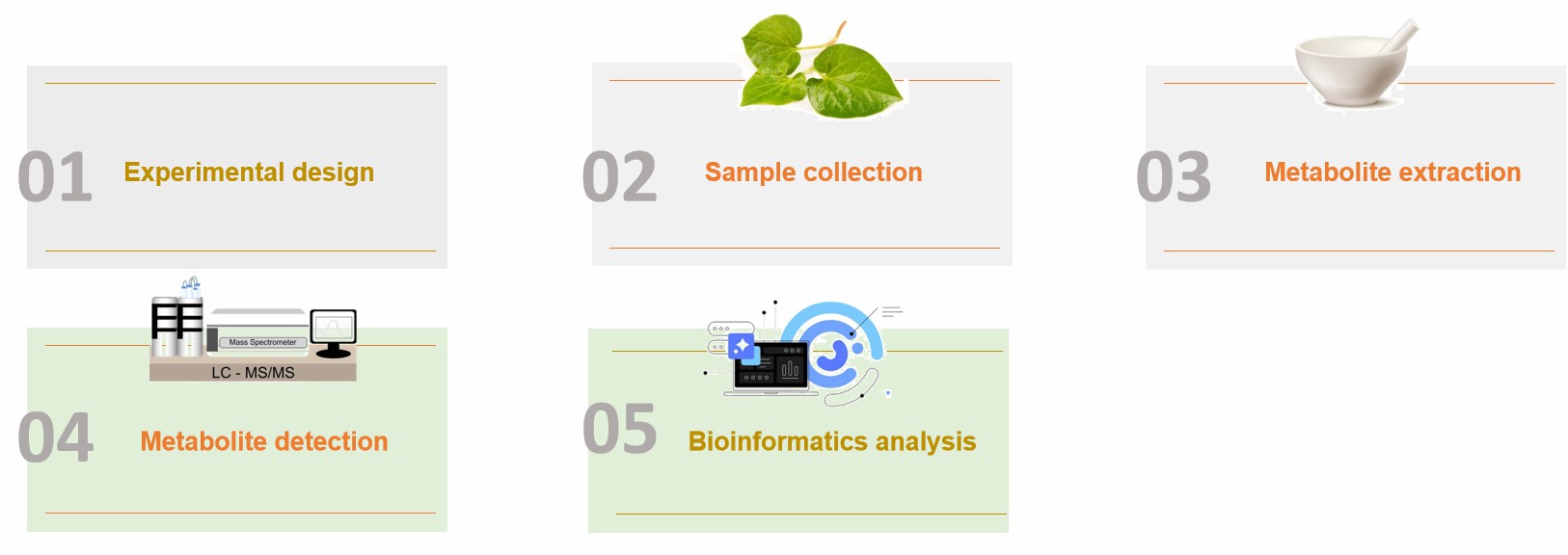Central Carbon Metabolism Targeting Assay
Center carbon metabolism (CCM) has traditionally been characterized by the glycolytic pathway (EMP), the pentose phosphate pathway (PPP), and the tricarboxylic acid cycle pathway (TCA). The CCM is the primary energy source for growth and provides precursors for other metabolisms in the body. The activity and protein expression levels of key enzymes in the CCM are genetically distinguishable, like phenotypes, and can be used to differentiate between species significantly. Given the critical role of the CCM in all organisms, it is essential to study the expression of its metabolites. Lifeasible is committed to providing comprehensive targeted metabolomic analysis services for plant research; we have extensive experience and expertise in CCM-targeted assays.
Importance of Central Carbon Metabolism Targeting Assay
- Metabolic pathway analysis. Targeted analysis can provide insight into plant metabolic pathways, help identify key enzymes and metabolites, and reveal the metabolic adaptation mechanisms of plants under different environmental conditions.
- Biosynthesis research. Central carbon metabolism is the basis for synthesizing many important biomolecules, and targeted analysis helps study the synthetic pathways of these biomolecules and their regulatory mechanisms.
- Ability to cope with adversity. Metabolic changes in plants under adverse conditions are the focus of plant resilience research, and targeted analysis can reveal how plants respond to environmental stresses by adjusting their central carbon metabolism.
- Breeding and improvement. Understanding the regulatory mechanisms of central carbon metabolism can provide a theoretical basis for plant breeding and further assist in selecting high-yielding and stress-resistant crop varieties.
Our Service for Central Carbon Metabolism Targeting Assay
Liquid chromatography technology (LC-MS/MS)
The central carbon metabolism analysis method based on LC-MS/MS detection technology can be used to analyze hundreds of central carbon metabolites in vivo. This is especially important for analyzing complex metabolites involved in plant central carbon metabolism. The application of LC-MS/MS technology can help researchers choose the appropriate analytical strategy according to the research purpose. Currently, we often use LC-MS/MS technology for metabolic phenotypic difference studies, which are further used for plant quality evaluation, variety discrimination, and tissue specificity studies. In addition, LC-MS/MS technology can also be used in plant gene function identification and assisted breeding, plant metabolic changes under biotic and abiotic stresses, and secondary metabolite analysis. We provide a technical platform for the targeted determination of central carbon metabolism in plants based on LC-MS/MS technology, which significantly promotes the progress of plant metabolomics research as an efficient, sensitive, and flexible platform.
- LC-QQQ-MS. This is a high-throughput technology for the detection of the content of each substance in the carbon metabolic pathway at the center of the sample. It is characterized by accurate quantification, extensive database, and high sensitivity through data analysis to determine the changing relationships between substances.
- HPIC-QTRAP/MS. This technology platform can detect the content of each substance in the carbon metabolic pathway at the center of the sample in high throughput and determine the changing relationship between substances through data analysis.
- GC-MS. Used for precision targeting analysis, it can be used to analyze both unlabeled (12C or 14N) and labeled (13C or 15N) metabolites. the GC-MS platform operates in the Selected Ion Monitoring (SIM) mode of the mass spectrometer and is used to separate metabolites, such as monoterpenes and sesquiterpenes.
 Fig.1 Our service process. (Lifeasible)
Fig.1 Our service process. (Lifeasible)
Sample Request
| Sample type |
Plant tissue |
| Tissue site |
Stem, bud, leaf, root, fruit, healing tissue |
| Recommended sample size |
600 mg |
| Minimum sample size |
300 mg |
| Biological replicates |
3 |
Application of Central Carbon Metabolism Targeting Assay
- Photosynthesis mechanism research
- Plant adversity research
- Breeding and genetic improvement research
- Analysis of biosynthetic pathways
- Ecological function assessment
- Transgenic plant research
- Medicinal plant research
Highlights of Our Central Carbon Metabolism Targeting Assay
- Extensive database. Our assay includes many substances from the tricarboxylic acid cycle, glycolysis, and pentose phosphate pathway, covering dozens of metabolites.
- High sensitivity. We have an advanced detection platform, and the assay's sensitivity can reach the nanogram per milliliter level.
- Strict quality control. We ensure the accuracy and reliability of data through multi-dimensional quality control of instrument stability, substance residues, and QC samples.
- Comprehensive analysis. We provide multiple analytical contents and graphical presentations and can help our customers comprehensively analyze the results.
 Fig.2 Our service advantages. (Lifeasible)
Fig.2 Our service advantages. (Lifeasible)
Lifeasible provides reliable central carbon metabolism targeting assays to aid in plant-targeted metabolism research. If you are interested, please feel free to contact us.
For research or industrial raw materials, not for personal medical use!
 Fig.1 Our service process. (Lifeasible)
Fig.1 Our service process. (Lifeasible)  Fig.2 Our service advantages. (Lifeasible)
Fig.2 Our service advantages. (Lifeasible)